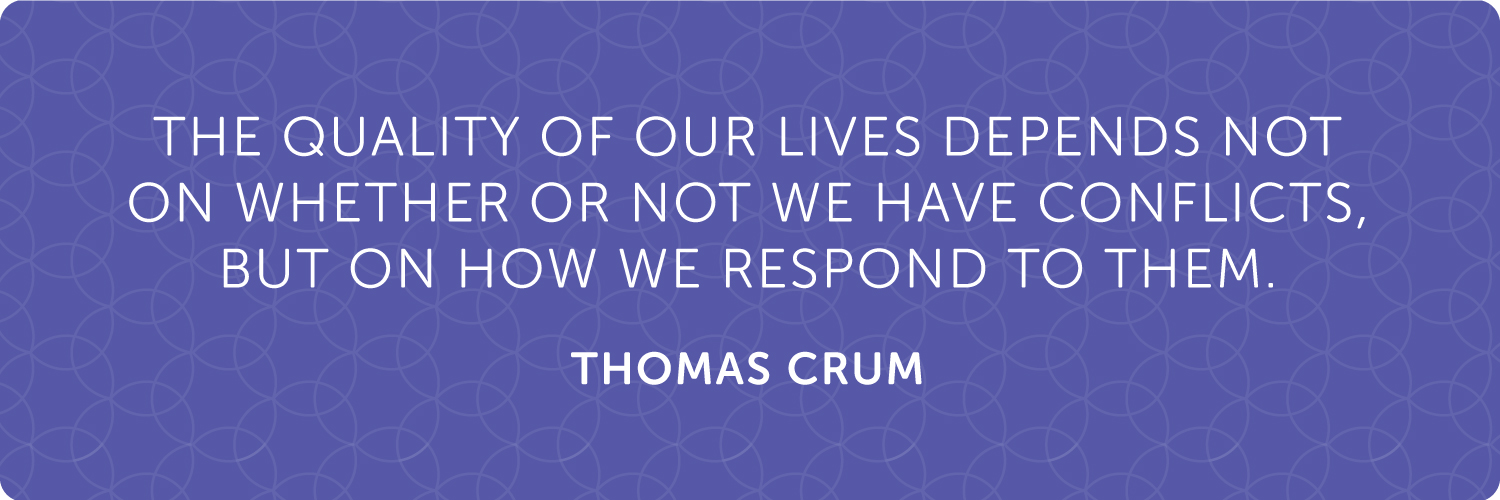ONGOING INTRACTABLE CONFLICTS ARE VOLATILE, HIGHLY DESTRUCTIVE, AND VERY DIFFICULT TO SOLVE. CAN ANYTHING BE DONE?
The complex nature of human relationships means examples of intractable conflicts, unfortunately, aren’t hard to come by. Tribal wars have wiped out entire populations. Long-standing religious, racial, and cultural tensions have spawned deeply ingrained dissension. Political parties have become more and more polarized. Management and labor find themselves in a deadlock.
Intractable conflicts are deep-seated disagreements that have either quietly or dramatically developed over time and have clearly defined "sides"—both believe they're fundamentally right and the other irrevocably wrong. The conflict has become much bigger and more complex than the original dispute.
Scholars, who study cases of severe conflicts that seem impossible to resolve, have noted telltale behaviors from both sides: humiliating dignity violations, hostile stereotyping, and a merciless effort to blame the other party for everything that’s wrong.

IT’S NOT BUSINESS; IT’S PERSONAL.
There’s a reason these conflicts are often so volatile and firmly rooted. The causes of intractable conflicts go deeper than mere surface disagreements. They involve values, identity, and emotion. In short: it’s personal.
In the business world, these symptoms manifest in hostile takeovers, union walkouts, labor-management conflicts, legal battles, shareholder revolts, impossible environmentalists, petulant executives, and disillusioned workers to name a few.
At some point as a leader, you may need to navigate a convoluted and treacherous landscape of deeply conflicting interests.
But we have good news for you: not all intractable conflicts are hopeless. However, they do require serious attention that goes beyond negotiation and mediation. They need a unique, multi-faceted, and prolonged approach.

UNDERSTANDING WHAT YOU’RE UP AGAINST: 9 CHARACTERISTICS OF INTRACTABLE CONFLICTS
The first step to finding a solution is to thoroughly examine and identify the problem. Let’s take a closer look at what makes these conflicts so dynamic and dangerous in the first place.
1. Multi-Generational Dissension
Most intractable conflicts have been years or decades in the making typically spanning several generations. This means that both parties have at least one generation that doesn’t know another reality besides the conflict. For them, it’s a way of life.
2. Provocative Rhetoric
Stubborn disputes are often marked by communication exchanges that are full of provocative accusations, derogatory stereotypes, and inflammatory threats of retaliation and retribution. This behavior continues to stoke the flames of discord.
3. Repeated Dignity Violations and Identity Threats
Deep-seated conflicts are initiated and perpetuated by actions or events that are viewed as serious violations of dignity. Repeated transgressions cut deeply, threatening groups and individuals at the core of their identity.
4. Humiliating Defeats
Typically, one or both parties feel they have suffered humiliating defeats and believe the other party is at fault. Over time, the actions or events which caused the embarrassment become unforgivable assaults.
5. Victimhood
Intractable conflicts usually involve various kinds of violence, sometimes physical, but mostly psychological. Residual feelings of trauma may persist over a long period of time, with fluctuating frequency and intensity. Those involved conclude that they have fallen victim to forces beyond their control and blame the other party.
6. Chosen Traumas
At least one of the parties in a serious conflict may have identified a humiliating defeat as their “chosen trauma.” The perceived offense is etched as a specific historical event that symbolizes who their opponent is (in an unfavorable light) and proves that their worst catastrophic fears are both realistic and justified.
7. Failed Peacemaking Efforts
When a conflict wears on and multiple attempts to settle basic disputes fails, this compounds frustrations and creates the sense of a bigger problem. Both parties are left feeling as if the conflict is irresolvable.
8. Stories of a “Never-Ending Conflict”
Because an intractable conflict doesn’t end in decisive victory for either side, each party comes to believe that the feud will continue forever. The parties often develop communal stories used repeatedly to explain why they’re trapped in this never-ending conflict. These stories serve to "villainize" the other side and merely perpetuate the conflict.
9. “Win/Don’t Lose” Survival Goals
Intractable conflicts develop into all-out fights, void of compromises. This sets the stage for an all-or-nothing, “win-don’t lose” mentality. Each side focuses on meeting their own needs, perceiving them as essential for survival. At this point, deep instincts for revenge may emerge.
In the worst cases, parties become so furious with each other that they seek revenge over resolution—even if it results in their own demise. It can begin to seem like a lost cause, but remember, intractable means difficult, not impossible.
So, when a conflict becomes adversarial and volatile, what can you do?
RESOLVING AN INTRACTABLE CONFLICT IN YOUR ORGANIZATION
If your organization is dealing with a stand-still conflict that’s not moving forward—or even seems to be taking steps backward—it may be time to consider bringing in a professional management consulting agency that specializes in helping organizations resolve intractable conflict.
Through years of experience in working with organizations of all sizes and types, ORG has created a unique approach to working through seemingly impossible conflicts.
First, the ORG team assesses the situation and the parties involved, and then we meet with each group separately. If each party is willing and able to work with us, we’ll assign preliminary work to be completed before moving on to the next step. Once assignments are done, everyone will be brought together for a facilitated experience that will require hard work and collaboration.
If your organization is experiencing conflict that appears beyond repair, there is hope. If there’s a way to work through long-standing discord, ORG has the expertise and tools to help. Let’s work together to uncover and resolve the root causes so that we can begin working toward building healthy working relationships.
Contact us today to tell us about your organization and the conflicts it’s facing.

ORG would like to thank Dave Nicoll, our expert on this topic, for his help in successfully guiding many organizations through intractable conflict.
Still hungry for info? Check out these transformational insights.
- Interview with Donna Hicks, author of Dignity: The Essential Role it Plays in Resolving Conflicts
- Intractable Conflict At Hostess Brands
- The Twinkie War: An Intractable Conflict


